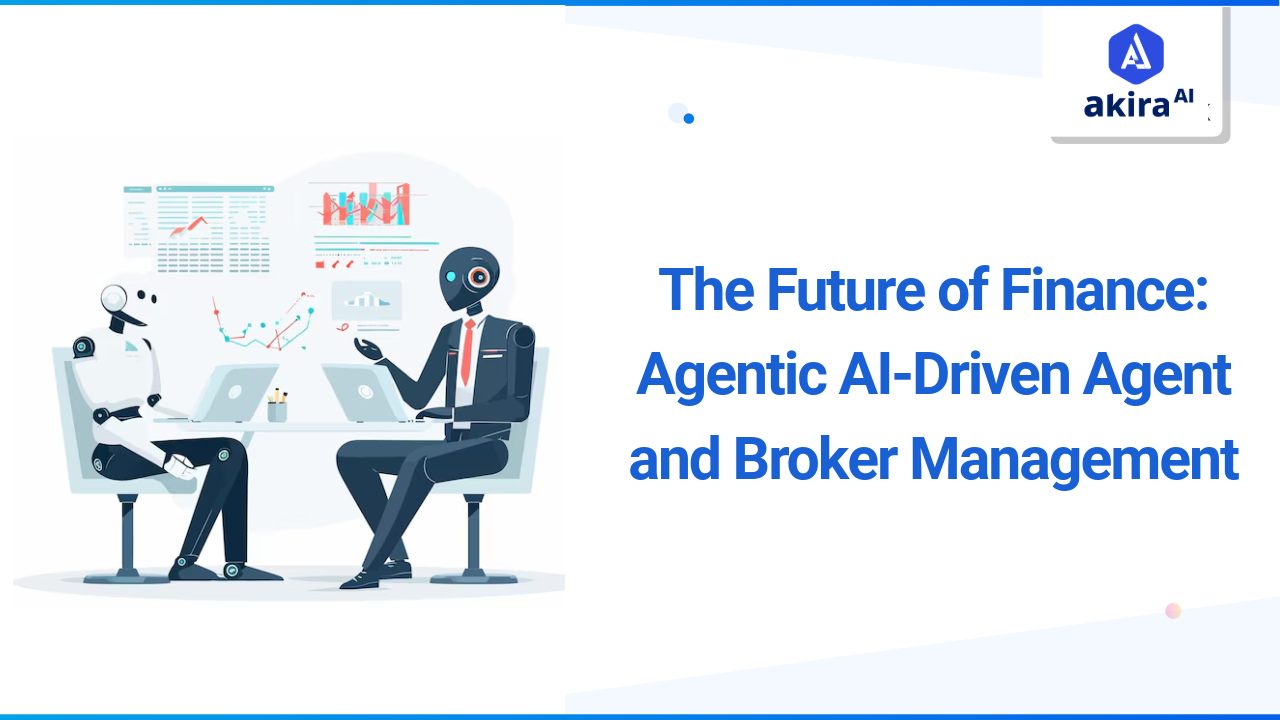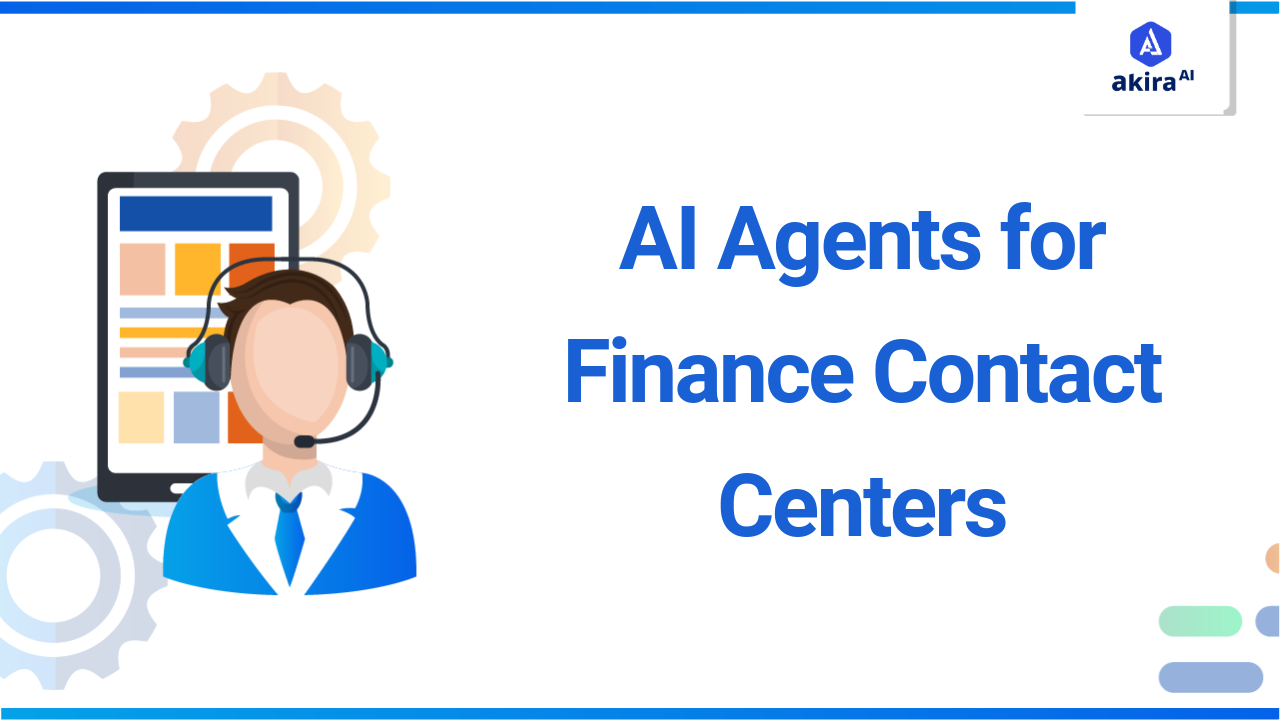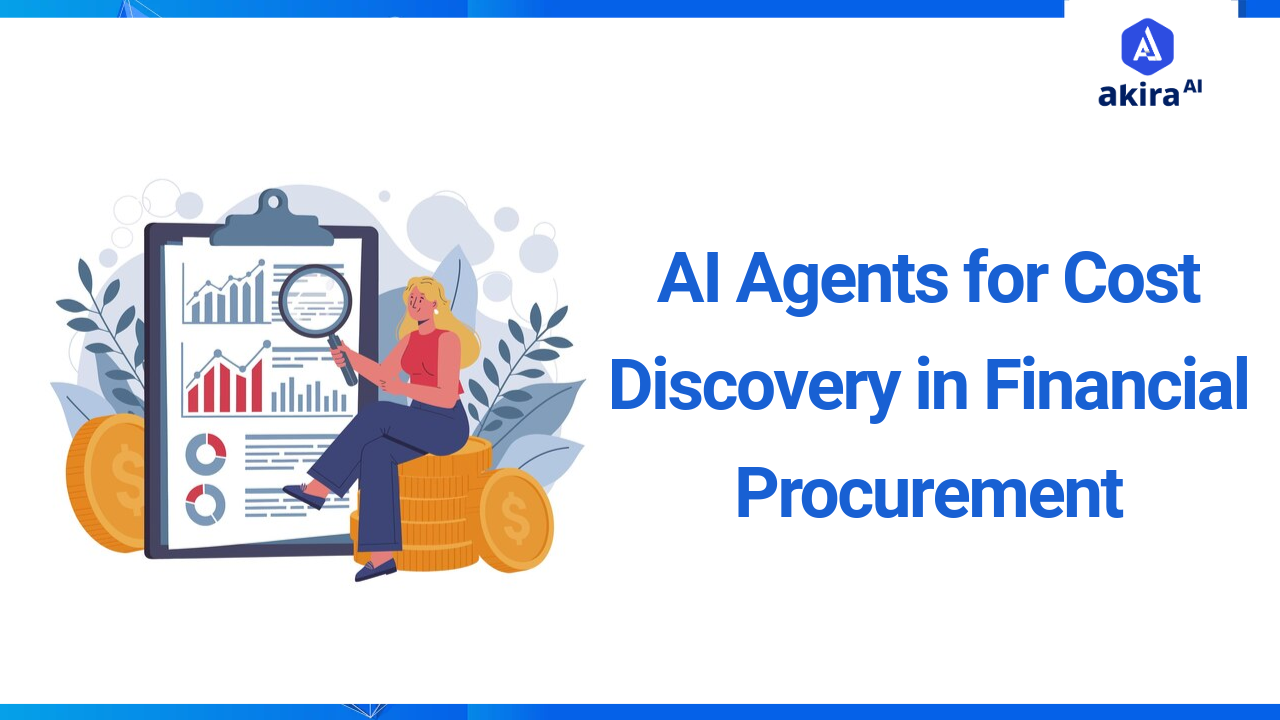In the modern financial landscape, debt collection is a critical yet challenging aspect for many organizations. The traditional methods of debt collection, often characterized by manual processes and high operational costs, are increasingly proving to be inefficient and ineffective. With the advent of AI Agents, autonomous debt collection systems are transforming the way businesses approach this crucial task. These systems utilize advanced technologies to streamline and optimize the debt recovery process, enhancing efficiency, accuracy, and customer satisfaction.
How AI Agents Revolutionize Autonomous Debt Collection
AI Agents
AI agents are computer programs developed to perform their tasks by making self-guided decisions based on observations of their environment, input, and specific objectives. Unlike stiff automation systems, an AI agent thinks, adapts, and acts independently. They are designed to perceive their environment, learn from past experiences, and hence make decisions to attain certain objectives.
In fact, everything from the execution of simple single-task programs to complex multi-process system execution is an AI agent. Particularly, they are good in dynamic and unpredictable environments; they can access the Internet, interact with applications, process large volumes of data, conduct transactions, and continually improve their methods based on feedback.
AI Agents in Debt Collection
In debt collection, AI agents revolutionize traditional methods by automating and optimizing various stages of the process. From data collection and validation to predictive analytics and personalized communication, AI agents handle complex tasks with high precision and efficiency. These agents can segment customers based on risk levels, analyze payment histories, and predict the likelihood of payment, allowing for tailored collection strategies. Additionally, AI agents facilitate seamless communication with debtors, send timely reminders, and negotiate settlements, all while ensuring compliance with regulatory requirements.
Key Challenges in Traditional Debt Collection
-
Manual Data Processing: Manual processing of data makes processing time-consuming, and errors are prone due to human weakness. These errors lead to data inconsistencies, outdated information, and inefficient workflows. The lack of automation creates challenges in processing the huge volume of debt-related issues.
-
Ineffective Communication: Traditional methods are often not personalized, and follow-ups are not done promptly, leading to low engagement from debtors and consequently low recovery rates.
-
Inaccurate Risk Assessment: Without Advanced analytics to predict debtor behavior and customer segmentation, it leads to poor and diffused strategy toward the collection of debts, which results in misused resources in low-priority cases and missed opportunities for more effective recovery in high-risk cases.
-
High Operational Costs: Manual processes and labor-intensive tasks increase operational costs, as the need for large teams to manage data, communicate with debtors, and process payments leads to inefficiencies.
-
Compliance Issues: The huge regulatory requirements make it difficult and error-prone just to comply on a manual basis, as all the dynamics that characterize collections of debts are subject to constant change.
How AI Agents Address These Challenges
AI agents address these challenges by automating data collection and validation, ensuring accuracy and efficiency. They utilize advanced machine learning models to predict payment behaviors and segment customers based on risk levels, enabling tailored collection strategies. AI agents also facilitate personalized and timely communication with debtors, improving engagement and recovery rates. By streamlining processes and reducing manual intervention, AI agents significantly lower operational costs. Moreover, they ensure compliance with regulatory requirements through consistent and accurate process execution.
Akira AI’s Multi-Agent Solution
Akira AI's solution is a comprehensive system that automates the entire debt collection process. Providing agents with round-the-clock processing gives financial organizations a predictive view of the demands associated with their goods.
.png?width=1920&height=1080&name=image%20(15).png) Figure: Technical Architecture of Autonomous Debt Collection
Figure: Technical Architecture of Autonomous Debt Collection
Process Flow
Debt collection flow is a coordinated series of steps designed to recover outstanding payments efficiently and ethically. The following outlines the step-by-step operation:
- Data Sources and Collection: The Records The system begins by gathering various data points from multiple sources such as:
•Debtor Financial Profile
• Debt Records
• Communication Logs
• Regulatory Compliance Data
This data is processed and transformed into Behavioral Data, which helps in understanding debtor behavior for more effective engagement. - Debt Collection Initiation: Once the data is collected and organized, the system triggers the Debt Collection Initiation process. At this stage, the system identifies overdue accounts that need to be pursued. It prepares an initial plan for managing each debtor’s case based on their risk profile and outstanding amounts.
- Orchestrator Workflow: The system’s central process orchestration begins, ensuring smooth execution of various tasks. Key responsibilities here include assigning tasks to different subprocesses for risk analysis, communication, and negotiation.
- Risk Assessment and Predictive Analytics: The system analyzes the payment history of the debtor and uses machine learning models to segment customers based on risk levels (high, medium, low risk). It predicts the likelihood of payment for each debtor, prioritizing accounts that require more urgent attention
- Automated Communication: The system sends reminders via every communication channel to the respective debtor through e-mail, message, or phone. Reminders have been automated and personalized based on the risk profile of the debtor for timely payment
- Negotiation and Settlement Process: When a debtor responds, the system engages them in a negotiation process. The system uses historical data and a knowledge base to offer appropriate repayment plans or settlements that increase the chances of recovery. During this stage, it works to maintain a positive relationship with the debtor by offering flexible options.
- Collection Report Generation: After the debt recovery process is completed, the system generates a Collection Report. This report includes details of the Recovery Rate and Customer Segmentation, as well as suggested next steps for future actions. It offers insights into how successful the current debt collection process was and provides recommendations for refining future collection strategies.
- Compliance and final steps: The system integrates with APIs to pull additional regulatory compliance data and ensure all actions are legally sound. This component makes sure the debt recovery process remains compliant with varying regional and legal regulations.
The final reports generated provide valuable insights for improving future collections, making the system both efficient and compliant.
TechStack Used In Autonomous Debt Collection
Our composite AI framework utilizes the components from traditional Machine learning to advance Multi-agent systems:
|
Layer |
Component |
Stack |
|
Multi-Agent Layer |
Orchestrator |
LangChain, Langraph, LLMs (Custom Domain-Specific Models) |
|
Predictive Analytics & Risk Assessment Agent |
ML Models (scikit-learn, TensorFlow), LangChain, LLMs |
|
|
Automated Communication Agent |
APIs, LLMs (Personalized Messaging Models), |
|
|
Negotiation & Settlement Agent |
Knowledge Graph (Neo4j, Elasticsearch), LLMs, Custom Negotiation Models |
|
|
Data & Embedding Layer |
Data Pipelines |
Apache Kafka, AWS Glue, Airflow |
|
Embedding Models |
OpenAI’s GPT Embedding Models |
|
|
Vector Database |
Pinecone, Qdrant |
|
|
RAG Layer |
RAG (Retrieval-Augmented Generation) |
LangChain, Llama Index, GPT-based LLMs |
|
Integration Layer |
Data Ingestion |
REST APIs, AWS Lambda, API Gateway |
|
Knowledge Base |
Neo4j, Elasticsearch |
|
|
Backend Layer |
Backend Pipelines |
FastAPI, Flask, Django: For API development |
|
Frontend Layer |
User Interface |
React, Vue.js, Angular: For creating an intuitive user interface |
|
Infrastructure Layer |
Infrastructure |
AWS, GCP, Kubernetes |
|
Authentication & Authorization |
OAuth 2.0, JWT |
|
|
Monitoring & Logging |
Prometheus, Grafana |
Multi-Agent Components
The autonomous debt collection system comprises several specialized agents defined as:
1. Master Orchestrator Agent: The Master Orchestrator acts as the central controller of the debt collection process. It ensures that all the other components, such as data processing, risk assessment, communication, and settlement, are executed in a smooth, coordinated manner. By leveraging a knowledge graph and advanced AI models, the orchestrator manages the workflow, making sure that the system reacts to real-time changes in debtor behavior and regulatory requirements. This agent is also responsible for integrating various data sources and distributing tasks to the appropriate agents for further processing.
2. Automated Communication Agent: The Automated Communication Agent manages all communications with debtors. It issues reminders and follow-ups, along with other types of communications, via a range of channels, including emails and text messages. It sends the messages personally, adjusting them according to the debtor's profile, which makes the communication less intrusive and more specific to their particular case. This agent automates the process of collecting timely communication with debtors and reducing the manpower in the general collection staff while increasing the chances of getting a positive response from the debtor.
3. Negotiation and Settlement Agent: It is this agent that undertakes the realistic process of bargaining in case a debtor calls the system. It has various flexible plans for repayment or settlement depending upon the financial condition of the debtor. The previous history and knowledge base are utilized in constructing proposals that will be useful for both the debtor and the creditor. This agent optimizes the bargaining process to reach the best opportunity of gaining recovered debts, whilst maintaining a good relationship with customers.
Traditional Solution vs Akira AI Multi-Agent Solution for Debt Collection
|
Aspects |
Traditional Solution |
Akira AI Multi-Agent Solution |
|
Data Collection |
Data collection is manual, which makes it time-consuming and prone to errors. |
Data collection is fully automated and uses APIs and data pipelines to gather information efficiently from multiple sources |
|
Data Integration |
Data from different systems like debtor financial profiles, and regulatory data are often fragmented and exist in silos, making integration slow. |
Data is seamlessly integrated from multiple sources into a unified system, which provides a holistic view of the debtor profile. |
|
Predictive Analytics |
Traditional solutions rely on basic statistical models, such as linear regression or rule-based systems that result in lower accuracy. |
Akira AI uses advanced AI models and machine learning techniques for high-precision risk assessment, |
|
Communication |
Communication with debtors is typically generic, sent on fixed schedules, and often fails to consider the debtor’s situation. |
Akira AI enables personalized and timely communication, tailored to the debtor’s behavior and risk profile. |
|
Negotiation and Settlement |
Negotiation is usually manual, driven by collection agents, leading to inconsistent outcomes |
Akira AI automates the negotiation process with consistent and optimized strategies that are tailored to the debtor's profile, |
|
Compliance |
It is challenging to maintain compliance with standards due to manual processes, which can lead to errors, delays |
Akira AI ensures automated compliance through integration with regulatory databases. |
Key Benefits of the Akira AI Multi-Agent Solution
Akira AI multi-agent solution transforms the debt collection process, offering a powerful tool for modern financial challenges as:
-
Enhanced Data Accuracy: Automated data collection and validation ensure accurate and reliable information, crucial for the debt collection process. This accuracy forms the basis for precise analytics and decision-making, ensuring that strategies are based on the most current and correct data available, reducing errors in debtor profiling and risk assessment.
-
Improved Risk Assessment: Advanced machine learning tools create high-precision risk profiling, based on which the debtors are weighted in assessing their probability of recovery. The models enable collection strategies in a personalized way for each debtor profile, hence enhancing the overall effectiveness of collection efforts quite significantly.
-
Optimized Communication The system ensures that tailored and timely communication is made which makes the debtors interact better through addressing the people in a manner commensurate with their particular situation and communication preference. This not only increases recovery rates but also assures good relations with the debtor, which is the key to future interactions.
-
Reduced Operational Costs: Manual automation reduces operating costs by eliminating the need for more people to control debt collection processes This increase in efficiency not only increases profitability but also enables the allocation of resources to more strategic tasks within the organization.
-
Regulatory Compliance: Consistent and accurate process execution ensures adherence to regulatory requirements, crucial in the debt collection industry. This compliance minimizes legal and financial risks associated with non-compliance, such as penalties or legal disputes, ensuring smooth operational flow
Conclusion
The evolving landscape of debt collection requires a shift from traditional methods to more efficient and compliant systems. AI agents, like those in Akira AI's multi-agent solution, address key challenges such as manual data processing, ineffective communication, and inaccurate risk assessment. With automated workflows, predictive analytics, and personalized communication, financial institutions can enhance recovery rates, lower operational costs, and ensure compliance. Embracing these innovations allows organizations to streamline debt recovery and improve customer relations, ensuring long-term profitability in a competitive market.


